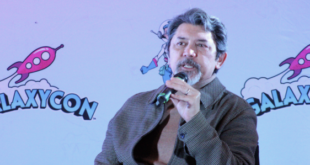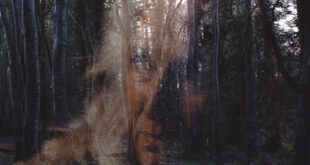This week’s topic is about a television genre that has only recently entered the landscape in a notable way: Horror. Yes, one can argue there have horror series before, and there have been. Tales from the Crypt, Stephen King adaptations, and even some episodes of The X-Files spring to mind. There’s also been the comedy attempts, like The Munsters and The Addams Family. But never have there been so many on at once, and certainly not ones made this well or getting this kind of attention.
Some may ask why we even need horror stories, as there are plenty of people who avoid the scary stuff. But fear is a primal part of the human psyche, like love and sadness. Why would we want to leave a part of ourselves unexplored, just because it can be a little unsettling?
Horror is a tricky subject because of the material. Horror films are almost always rated R and contain blood and guts, as well as violence and nudity. This isn’t the easiest thing to tone down for the small screen, especially without alienating the audiences who crave it. Any attempt to lessen the shocking material will make the show unwatchable to the target audiences and defeat the purpose. It’s adult subject matter, and so must be handled carefully.
The way to get around that, of course, is to develop a very, very good story that can be creepy without being too risque and gross. The reason I never got into the horror genre of films when I was growing up is largely because of the popularity of “slasher” flicks, that shallow fare without much substance, character development, or plot. Instead, it was about the outrageous ways someone could be killed, which will not fly on television, save a subscription channel like HBO or Showtime, which have not quite entered the fray yet.
Even with a good story, though, broadcast network television is not a natural home for such a tale. For one thing, it would have to air at 10 p.m. for decency reasons, so there are very few time slots that could accommodate it. For another, the FCC keeps a tight leash on the basic networks.
Luckily, cable has rapidly been growing in quality and offerings of well-made, scripted series. It is because of cable, which usually plays by the decency standards to satisfy advertisers, rather than because they face fines and penalties, that the envelope can be pushed. If enough people can be made to tune in, advertisers will be found to pay for the programming, guaranteed. Money is important to plenty of companies that don’t need to maintain a family-friendly image, and thus an opportunity exists.
Also, while the 1980s and 1990s concentrated a lot on light, fun shows, the last decade has seen a turn to the darker. Horror is a dark genre, and until the taste in popular culture turned away from the sweet and silly, there wasn’t much of a push to go in this direction.
That brings us to this millennium, the prime time for horror to become a valid players in the game. It started slow, with series such as Buffy the Vampire Slayer, the Doctor Who episode “Blink,” and The Vampire Diaries dipping a toe into the water, while still staying network-friendly. Then shows like Dexter went a step further. But it finally took off fully when FX developed American Horror Story and AMC gave us The Walking Dead.
The Walking Dead and American Horror Story have proven what basic cable can do, between the two of them, opening the floodgates for many more horror series that are already, and will continue to be, nipping at their heels. Interestingly, they are both quite popular, and have gone about their productions in very different ways.
The Walking Dead is about characters. Zombies are present, of course, but that isn’t enough to make it the ratings powerhouse it currently is, drawing in the non-horror fans that the show attracts. It’s because we get to see the people in that world struggle with fluid morality and what is necessary to survive that we tune in. Every so often, a cool death will occur, but the bread and butter is character development, and it does this extremely well.
American Horror Story, by contrast, is about the horror genre itself. It also boasts compelling people at the center, but it’s about taking the standard conventions of a horror film category, and deepening them into something more. Only so much can be done in two hours or less, but with thirteen installments to play with, it can take the familiar conventions and explore them in richer, fuller ways.
Both of these are quality shows that will open the door to others. Since they have been able to make this stuff that is both critically acclaimed and popular, they have created opportunity for others to follow. Among the recent offerings are Grimm, Cult, The River, and The Following, all broadcast shows that seek to get the same viewers, albeit with even more tame violence. The excellent Bates Motel will join them on A&E in a couple of weeks.
Comedy and romance may long have held an important place in our television schedules, but this will be the decade that horror joins them as a serious contender, and scary movie fans finally get to enjoy a weekly series in their favorite vein. Or artery.
 Blogcritics The critical lens on today's culture & entertainment
Blogcritics The critical lens on today's culture & entertainment



